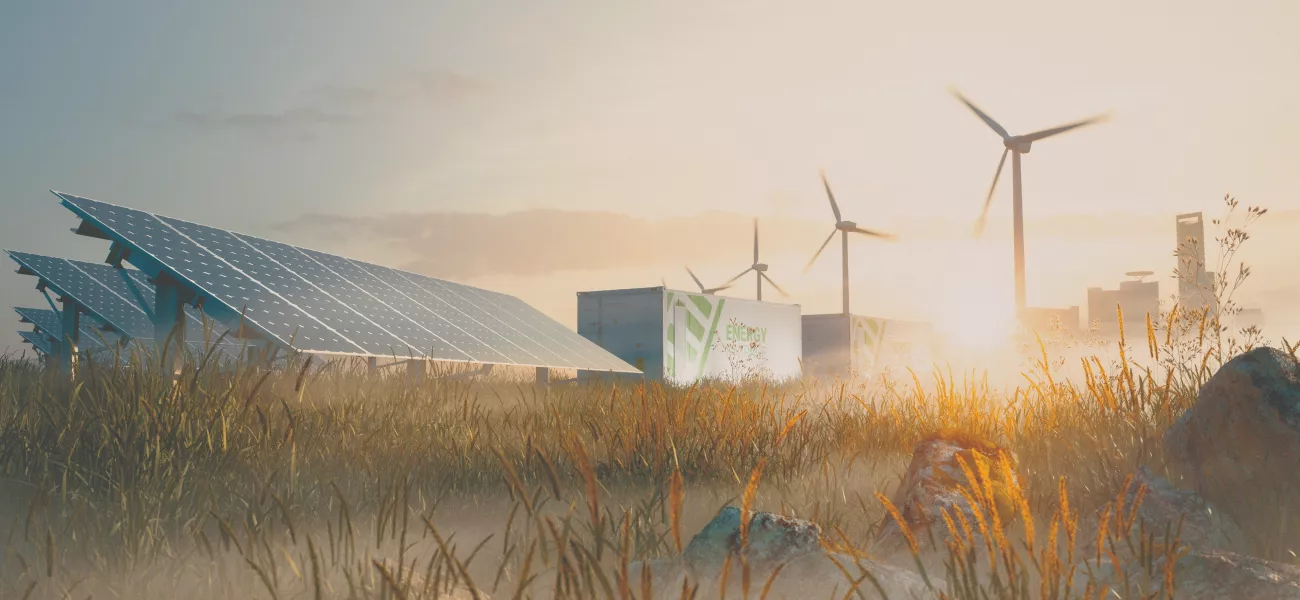
It is undeniable that the world is in a climate change crisis, and the need for action is more than pressing - it’s vital. Encouragingly, the amount of energy created from renewable sources – something that will be central to nations meeting their targets for reduction of CO2 emissions – is growing around the world.
A recent study from the International Energy Agency (IEA) highlights a record-breaking surge in renewable energy capacity additions, with 2023 seeing an estimated increase of 440 GW globally—larger than the entire installed capacity of Germany and Spain combined. Solar power dominates this growth, accounting for two-thirds of the increase, driven by declining costs and increased adoption in residential and commercial settings.
Protecting critical infrastructure
With this positive momentum and the increased proportion of energy being supplied from sources such as solar and wind, renewable energy plants are quickly becoming as much a part of a nation’s critical infrastructure as any power source. Disruption to their operation will impact power supply and have an immediate effect on citizens and businesses.
For those who might want to damage and disrupt – from vandalism to activists to more serious organized crime and terrorism – power plants of all types represent attractive targets. Some of the unique features of renewable energy plants – particularly solar farms – bring specific security challenges. The use of modern surveillance technologies in securing solar power plants is therefore essential.
Supporting solar farm security, safety, and operational efficiency
While security in and around solar farms is critical, network video monitoring plays several other roles in management and maintenance, enhancing effectiveness and creating efficiencies.
Uninterrupted, efficient operations are essential if the solar power plant is going to deliver as much renewable energy as possible, and video monitoring plays a role in identifying issues that could affect the plant’s output.
Ensuring the health and safety of any personnel working in and around the solar farm can be supported by video monitoring, ensuring that all health and safety guidelines are being adhered to, while also acting as an additional method to ensure that maintenance work has been carried out properly.
Last but by no means least, with solar farms and renewable energy being central to meeting overall emissions targets, it is essential that the technology used also contributes as positively as possible to the broader sustainability goals of the power plant.
The unique features of solar farms
Solar farms – sometimes also referred to as solar power plants or solar parks – often have unique features not found in other traditional or renewable energy facilities.
Scale is one such feature. Solar panels can each capture a certain amount of sunlight and turn this into electricity – the more solar panels, the more energy. As a result, solar power plants can be significant in size, many reaching hundreds of acres, with lengthy perimeters that need to be protected from breach day and night. In addition, while solar farms cover large areas, specific areas in the site will require greater levels of security and the ability to monitor maintenance work.
One benefit of solar farms – the fact that they can be manned by a relatively small number of people – also brings challenges. Surveillance technologies are needed that can monitor large sites remotely, allowing operators to identify the causes of incidents and respond appropriately.
Finally, solar power plants are often located in places where extreme weather is likely. Sunlight is an important requirement, obviously, but with hot and dry conditions often also comes wind and dust. Anything which covers a solar panel to any extent will reduce its efficiency and energy output, and surveillance technologies can play a role in keeping solar power plants operating at their full output.
Essential surveillance and security technologies for solar power plants
A number of technologies can be employed in protecting solar power plants, ensuring health and safety and operational efficiency.
In combination with other technologies, network cameras are an essential tool in protecting the perimeter of solar farms and in reducing the number of false alarms caused by weather events or animals. Visual cameras, thermal technology, radars and analytics combine to detect, verify, identify, and track people or animals getting close to or breaching perimeters. Low-light technologies allow for 24hr visual verification even in almost total darkness.
The integration of network audio also helps meet the security, safety and operational efficiency of solar farms. Live and pre-recorded warnings can be played when intrusions are detected, whether deliberate or accidental, while instructions regarding safety or maintenance can be played to personnel on site.
For remote solar farms which are generally unmanned, access control technologies can be employed which ensure that access is only granted to those authorized to enter, whether with permanent or temporary credentials. And when on site, body worn cameras can be invaluable in verifying that important maintenance has been carried out correctly.
Meeting broader solar farm sustainability goals
Of course, the whole point of solar power plants, and renewable energy more broadly, is to reduce and eventually replace our dependence on fossil fuel emissions and the damage these do to the environment. It’s therefore critical that any technology used within the power plant itself contributes positively to the overall goal of increased sustainability, and surveillance technologies are no different.
As mentioned, one of the immediate benefits of effective perimeter protection is the reduction in false alarms. Without it, the need to react to any alert or suspected intrusion can have an environmental impact, as security staff are deployed in vehicles to investigate.
The ability to monitor the operations of solar farms remotely – through video and thermal cameras – often results in fewer physical site visits being required for maintenance checks. In addition, both technologies play a role in providing early warning of operational issues, meaning that remedial action can be taken quickly before issues escalate, with the potential for wider environmental impact.
A reduced need for artificial lighting
For several reasons, reducing the need for lighting is important in and around solar farms. Overall energy consumption is one reason – if an entire site needed to be illuminated during hours of darkness in order to allow for effective surveillance, this would require a significant amount of electricity.
Another compelling reason to reduce lighting relates to the immediate environment. Solar power plants aim to have as minimal negative impact on the environment in which they are located as possible. This included not disturbing the natural rhythms of wildlife, which can often be nocturnal.
Modern surveillance cameras and sensors employ a number of technologies which mean they remain effective in low-light or even total darkness, reducing the need for additional lighting and leaving the immediate environment undisturbed by light pollution.
Savings and cybersecurity from smart technologies
Modern and smart surveillance technologies also aim to reduce their own energy consumption. More analytics now take place on the edge of the network, within the cameras themselves, which means that only the data needed is transmitted across the network. Combined with other technologies such as Zipstream, these reduce the bandwidth, storage and server requirements of the surveillance solution, and with these create savings in cost and energy.
Unfortunately, it is not only physical attacks which can be a risk for critical infrastructure sites, solar farms included. Bad actors are increasingly using cyberattacks as a method to disrupt energy supply, whether for financial gain or to cause public health issues. Again, any such disruption will reduce the ability of a solar power plant to deliver its maximum impact in providing renewable energy, and therefore robust cybersecurity needs to be a feature of any surveillance technology.
Moving towards a sustainable future
Sustainability has been a focus for Axis for many years, both in our own business and operations and supporting the goals of our customers. The momentum behind increased renewable energy generation is incredibly positive, and one which we hope continues.
However, the production of renewable energy cannot come at an environmental cost itself – all aspects of a renewable energy plant need to be assessed with regard to their contribution to overall sustainability goals. Video surveillance technologies tick all the boxes for solar farms in terms of security, health and safety, operational efficiency and their overall environmental impact.
